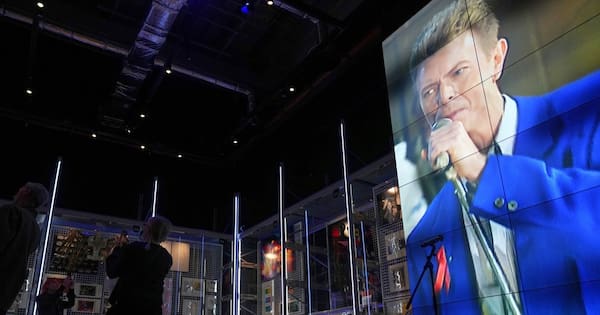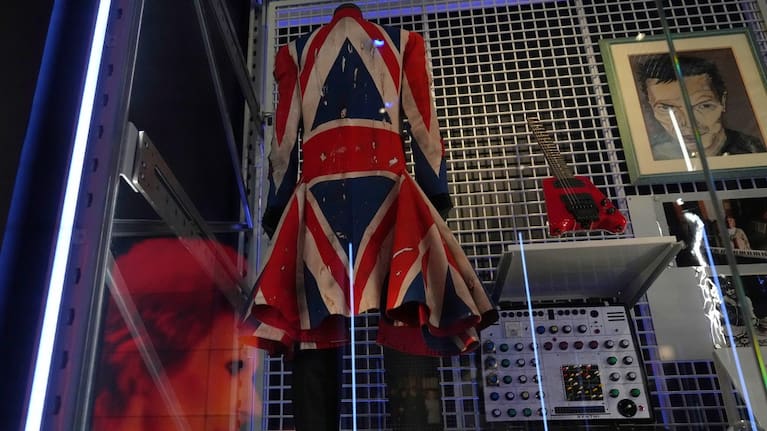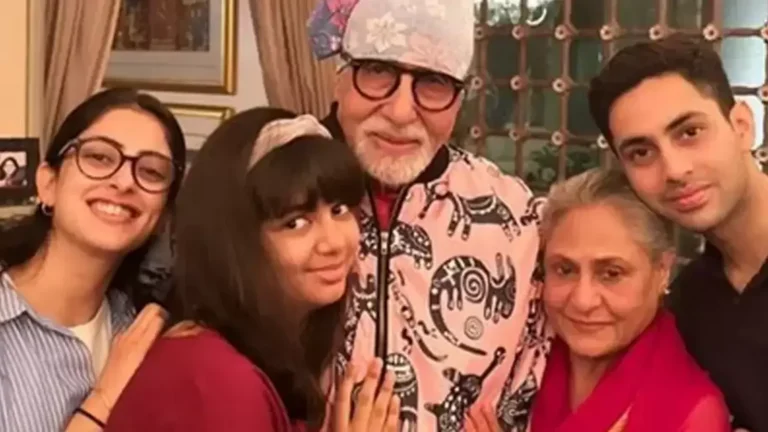Explore 50 Years of David Bowie’s Creative Journey at London Archive

Following the passing of David Bowie in 2016, his extensive musical legacy and unrealized projects have intrigued fans and scholars alike.
This week, the public gained access to Bowie’s private archive, which offers a glimpse into his hidden works and unfinished ideas.
Housed at the Victoria and Albert Museum in London, the archive comprises around 90,000 items from Bowie’s estate. Among these are handwritten notes for a movie featuring Major Tom, the astronaut from Bowie’s iconic song “Space Oddity,” who finds himself in a “disgruntled America.”
Insights into Untold Stories
Curator Madeleine Haddon described the unproduced film, titled “Young Americans” after Bowie’s 1975 album, stating it explores the experience of being British in the U.S. and considers broader international politics.
Among other unrealized concepts is “The Spectator,” a musical about an outlaw in 18th-century London that Bowie was developing shortly before his death from cancer at age 69.
“It examines the complex ties between art and politics in London during a pivotal time in history,” Haddon remarked at the V&A’s David Bowie Centre preview. “I would have liked to see where he intended to take that project.”
The Harptone 12-string acoustic guitar and case used by David Bowie on Ziggy Stardust and the Spiders from Mars and Let’s Dance in 1970. (Source: Associated Press)
The centre opens on Sunday and is a treasure trove for Bowie enthusiasts and researchers alike. It includes stage outfits, instruments—like a Japanese koto and Ziggy Stardust’s guitar—alongside letters, lyrics, photographs, and idea-laden sticky notes.
This archive chronicles decades of Bowie’s dynamic creativity, showcasing his evolution from David Jones—a name he was born with in the London suburbs in 1947.
Harriet Reed, a theatre and performance curator at the V&A, noted that Bowie actively documented his life, maintaining a collection of notes, to-do lists, and other records. “His enthusiastic engagement with culture is compelling,” she remarked.
Broadening Influence Beyond Music
Over the years, Bowie transitioned through multiple musical styles, from glam rock to soul and electronic music, collaborating with artists across genres. He even established an internet service provider known as BowieNet in the ’90s.
As Haddon observed, “He was a master world-builder. Music was just one avenue of the imaginative spaces he created.”

Earthling, a Union Flag frock coat designed by David Bowie and Alexander McQueen in 1997. (Source: Associated Press)
The archive, located within the V&A East Storehouse in London’s Olympic Park, is designed as a museum and warehouse combination. Visitors can book free appointments to view and, in some cases, handle items under supervision.
“We hope visitors will find inspiration in Bowie’s work to ignite their own creativity,” Haddon added. “We aim to spark new stories and unforeseen connections between Bowie, contemporary conversations, and the audience.”
Since the launch of the booking system, the most sought-after item appears to be a distressed frock coat created for Bowie’s 50th birthday concert at Madison Square Garden in 1997 by Alexander McQueen.
‘A Real Trooper’
The archive includes a variety of items, from the mundanely personal—a key to Bowie’s Berlin apartment shared with Iggy Pop—to creative gifts sent by fans, such as drawings and homemade music boxes. The collection unmistakably highlights Bowie’s ongoing influence on popular culture.
Interestingly, one item in the archive is a letter from Bowie’s father encouraging him during difficult times as a young musician, describing David as a “real trooper.” Adjacent to it, a rejection letter from The Beatles’ record label acknowledges they were “not interested in signing David Bowie” back in 1968.
Does the archive instill a sense of nostalgia or inspire future creativity for you? Let us know your thoughts!





